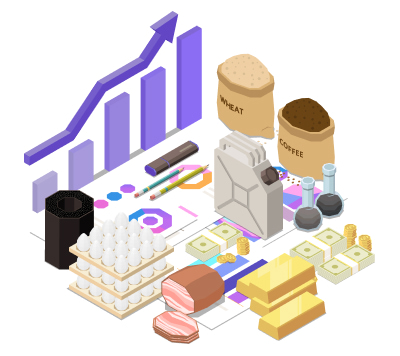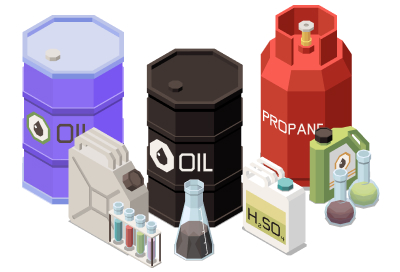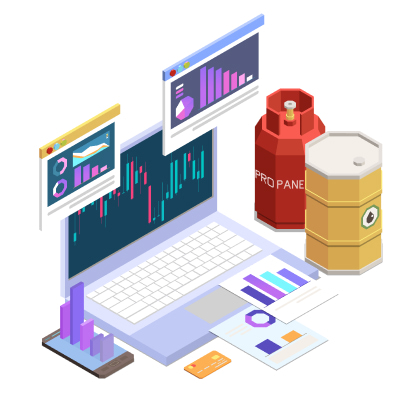There are some essential elements attached to commodity trading that you should know before taking the plunge.
Our comprehensive guide aims at educating our readers on ways to trade commodities successfully. Everything you need to know, including commodities trading strategies, is listed here. At the end of it, you will be able to start trading commodities confidently and have a shot at making profits. So, let’s get the ball rolling.
What is Commodity Trading?
Let’s begin by understanding what commodities are. A commodity is a raw material that has been naturally produced. It can produce or process other finished goods and sell for profits. Examples of commodities include precious metals, oil, wheat, lithium investing, livestock, lumber, cotton, natural gas investments and more.
Commodity trading is the buying and selling of the above commodities. Note that they fall under different categories and so their supply will vary hence affecting their market price. Here are the significant factors affecting the price of commodities:
Commodities are part of our day-to-day activities. Therefore, the price of a commodity will depend on the economic demand. For instance, when the economy of a particular developed country is affected, the commodities’ demand reduces, thereby affecting their market prices. This primarily affects countries that benefit from exportation.
Whether the supply of commodities is high or low, the price tends to be affected. Therefore, bear in mind the factors that contribute to a commodity’s supply before deciding to trade.
Weather change can significantly impact the price of commodities. For example, If there is a hurricane or earthquake, the oil or crop price will go high because of a reduction in supply.
The US dollar is a global currency, and so, its performance will affect the prices of commodities. When the US dollar goes up, commodity prices tend to reduce because the dollar supply reduces as well. However, in case the US dollar weakens, commodities prices go high.
Sometimes, the availability of a commodity reduces because of high prices, and when this happens, substituting with a similar product will enable you to continue trading. For example, you can replace commodity A with commodity B or vice viser if you see the price of either commodity is favourable to trade.
Commodity Trading Strategies

Like any other form of investment, commodity trading has its strategies that could help in increasing your potential of earning profits. As a beginner, starting from watching the latest news and reading magazines will help you understand the basic market trends. You will also learn essential trading tips while figuring out which commodity is worth trading.
That being said, Let’s take a look at the basic commodities trading strategies that will help you in your activities. They rely on technical metrics that traders mostly identify using charting platforms.
Range Trading
Range trading is a common commodity trading strategy in the industry. It usually involves buying commodities when their prices are low (usually known as support level) and selling the prices go up to the resistance level or are at the top of a range.
This range-bound strategy will require the use of technical indicators to help you identify the best entry and exit points. It is an easy to master strategy, especially for beginners, since all you have to do is wait for the range to move to a breaking point and close your positions.
Note that the demand and supply of commodities influence the support and resistance levels. This means that when the demand goes up, commodities prices are also likely to increase, and when the supply is high, the prices will go down.
While range trading can be an excellent strategy to earn profits, it works through the estimation of the support and resistance levels. Therefore, you need to be very careful and keen before setting entry or exit points because the chances are that the support and resistance levels may go beyond your estimates.
Breakouts
Breakouts are mainly based on short term movements. Usually, market trends experience new highs and lows, which you need to take advantage of. It allows you to buy a commodity when the prices are almost at their highest and sell before they get to their lowest of the normal trending range.
Breakout levels will occur at any moment, so you need to stay abreast with the latest trending markets to be able to identify the best points for entry and exit. Note that sometimes the trends are not as strong as you expect them to be, and this might affect your whole trade.
Fundamental Strategy
Traders here use fundamental analysis to determine the factors that influence supply and demand levels. These include production levels and macroeconomic factors.
For example, when the demand for oil goes up, traders might open long positions in order to benefit when the oil prices increase. This strategy also requires thorough research and starting with observing technical chart patterns could be one of the easiest ways to stay updated with commodities prices.
How to Trade Commodities
Trading commodities carries risks such as market volatility, leveraged positions, and the potential for substantial losses. To manage these risks, diversify your investments, use stop-loss and take-profit orders, and trade with funds you can afford to lose. Additionally, stay informed about market factors, adhere to a well-defined trading plan, and guard against emotional decision-making.
It is also crucial to comply with market regulations and be cautious of counterparty risk. Regularly reassessing your risk tolerance and trading strategies will help you trade responsibly and maximise profitability.

There are different ways for commodity trading in the UK. Identifying the methods to use for commodities trading will help you in choosing the right broker. This will also help you budget and choose a suitable strategy for your trade.
That being said, below are the most popular forms of commodities trading. Whether you are an advanced trader or a newbie, you will find something suitable.
Physical Delivery
This is one of the most traditional ways to trade commodities. You can purchase large quantities of commodities and store them while waiting for the change in price in order to sell.
However, commodity trading with this method requires a lot of processes like finding secure storage and Insuring your goods.
Futures
These are contracts that specify the dates by which a particular commodity was bought or sold. It is also one of the traditional commodities trading methods that still exists to date in the industry.
Futures contracts are primarily recommended to advanced traders because it involves high margins and lots of commodities. However, if you are a confident beginner who can quickly apprehend the markets using technical analysis tools, then you have no reason not to give it a try.
It is worth noting the distinction between spot market and futures market. Understanding the differences between these two markets is crucial for traders looking to engage in futures trading.
Options
Options trading comes in call options and puts options on commodities. Here, you buy the rights to buy and sell a specific underlying asset at a certain price within a given time frame. Call options allow you to buy a commodity, while put options let you sell them.
Options trading is one of the best commodity trading methods for newbies. It does not require extensive research compared to futures. It also does not grant you the obligation to buy and sell commodities.
Learn more about Options in our “Best Options Trading Platforms in the UK” guide.
ETFs

Exchange Traded Funds (ETF) trading gives you easy access to the commodities markets. You can use commodity ETFs to focus on single commodity or futures contracts.
This method of commodities trading tracks the performance and prices of other instruments. It is also driven by demand and supply and requires extensive knowledge to be able to make the best choices.
Shares
Share trading is also among the common trading methods in the industry. It lets you buy equities in any company that owns commodities. You will then wait for the prices to appreciate so that you can sell the shares at a profit.
Buying commodity shares requires extensive research and market analysis. This is where you need to take advantage of the technical indicators and chart patterns to stay on top of your trading activities.
CFDs
Commodities can also be traded as Contract for Difference (CFDs). With commodity CFDs, you will not own the underlying traded assets. Instead, you will only speculate on the difference in the commodities’ price movements. CFDs can also be applied to futures contracts, opinions, and ETFs.
With CFD brokers, you will not pay trading commission but spreads only. It also allows you to trade with borrowed funds so that you can maximise the amount of profits at the end of the activity.
Note that commodities CFDs are challenging to manage compared to other trades. They carry a high potential of making and losing money. Therefore, before getting into this commodity trading method, we encourage you to conduct extensive research and be sure of your moves.
Learn more about UK CFD Brokers and UK CFD Trading Apps in our other guides.
Spread Betting
If you have experience in sports betting, then spread betting on commodities should be a choice for you. This method only allows you to bet on speculating whether a value of a commodity will increase or decrease. You also will not own any underlying asset.
Commodity spread betting is a tricky trading method and requires keen market study and choosing the right spread betting broker to succeed. The best thing about it is that any profit gains from this method are tax-free, which maximises your income.
Read also about the leverage trading for beginners in our other guide.
Finding a Commodities Broker
Learning how to trade commodities is a good start to being a successful commodities trader. However, you need a good broker at your disposal that will simplify your experience and make it even more enjoyable. You can find such brokers here at TradingGuide.co.uk.
Let’s dive into what you need to look for to identify the best commodities broker in the UK market.
Your security as a trader should be a primary concern when choosing a commodities broker. Entrusting your trading funds to a broker that the FCA does not regulate is a risky move that you can avoid. Note that there are many fraudulent brokers in the market. Therefore, for the safety of your funds and information, just consider a regulated broker.
The best thing about commodities is that you can trade various assets such as metals and oil. Figure out which commodity interests you and find a broker offering it.
Additionally, the assets should be within various markets and easily accessible. This will not only increase your profit margin, but it will also make you have fun with your activities rather than seeing it as a means of making money.
Choosing a broker with the instruments you wish to trade is essential in your trading decisions. You should also ensure that you are comfortable trading on the platform. So, how do you identify the best platform?
Many brokers have demo accounts, and you should take advantage of these accounts to figure out if a platform works best for you. Check whether there are the necessary tools to help you in your strategy. The platform should also have customer service contacts that you can quickly contact when an issue arises.
Your choice of a broker should complement your budget. Commodities brokers have varying charges, including commissions and spreads. You should choose based on whether you plan to venture into short-term or long-term commodities trading.
While commissions are mainly based on long term investments, they are a percentage fee added to a trade. On the other hand, spreads are the difference between the buying and selling price. Usually, spreads are charged on derivatives trades.
User opinions tell you what to expect from a broker even after conducting your own research. They are real experiences of other traders, which you can easily find on Google Play, the App Store, and Trustpilot.
Note that other than guiding readers on how to trade, we also recommend the best commodities brokers. During our research, we also include user opinions for accurate and transparent recommendations.
Pros and Cons of Commodities Trading
- Commodities trading carries high volatility than other forms of trading, which can earn you quick profits if you make the right moves.
- It is an excellent way for traders to diversify their portfolio.
- You will never lack a commodity or option to trade since there are plenty in commodities trading.
- You can trade commodities either as derivatives or by owning the underlying assets.
- Commodities trading can be a good venture for making a lot of money if you conduct extensive research and apply the right strategies. Rapid demand for a commodity can be an excellent opportunity to make profits trading commodities.
- Commodities trading is more profitable during inflation, unlike other markets which get affected negatively. Therefore, if you own commodities in your portfolio during this time, you can make good profits.
- The high volatility in commodities can be risky for your investment if you do not apply the best strategies.
- If you trade commodities on leverage, the chances are that you can lose and when you do, more than what you invested also goes down the drain.
Long vs Short Trading
Before we let you go and try your luck in commodities trading, we thought you should know that commodity trading allows you to go short and long, just like stocks and forex trading.
Short trading in commodities means buying a commodity hoping that its price will decrease in value. In contrast, long trading is buying a commodity with hopes of increasing prices in the long run.
Both long and short trading requires different trading strategies. Therefore, it’s best to identify the one that is suitable for you before you dive straight in.
To learn more about long-term investment apps, please read our other guides.




Never could get my head around commodities trading, thanks for the clear explanation. The easiest to read and understandable guide I've ever read